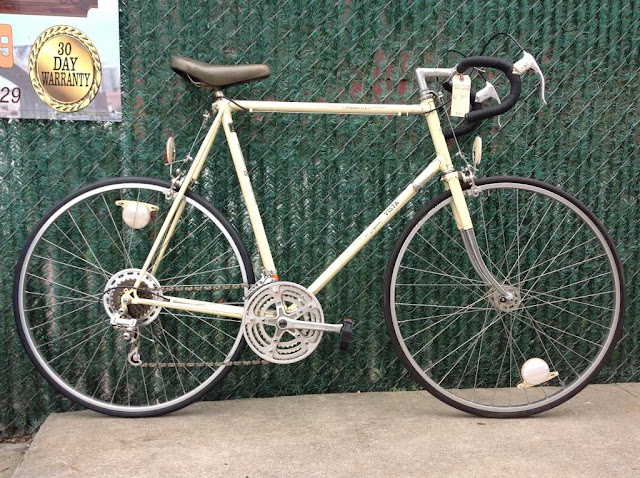About thirty years ago, I was a writer-in-residence at a number of New York City schools, and St. Mary's Hospital for Children, through the Teachers and Writers program. Most of the time, I cycled to the schools or hospital. Most of the time, I had to lock my bike on city streets. That meant, for me, riding my "beater," whatever it happened to be at the time.
The bikes I used for the purpose weren't bad: Bike-Boom era 10-speeds that I turned into 5- or single-speeds. (A couple were stolen; one crashed.) But they weren't as nimble and fun to ride as my racing, or even touring, bike. Sometimes, after my workshops with the kids and teachers, I'd go out for a spin on my "beater" because there wasn't enough remaining daylight for, or it was simply easier than, riding to my apartment and switching bikes.
If I found myself in a really good rhythm, or pedaling into a headwind, I'd wish that my "beater" could transform into my racing, or even my touring, bike.
Have you ever wished, in the middle of a ride, that the bike you're riding could become another bike? Perhaps you were yearning for a bike you didn't have. Or, you own multiple bikes, took one out and, because the day's ride was not what you'd anticipated, wished that you'd mounted one of your other steeds.
(I think now of a time I pedaled my mountain bike into a stiff headwind I didn't anticipate on a course that was flatter and clearer of debris, mud and slush than I expected it to be after a snowstorm.)
Well, you now you can have a "chameleon" bike
as long as you are happy on a lowrider or extra-tall bike!
The strange-change machine, an entry in the Make It Move contest on Instructables, started as a full-suspension mountain bike. The rear spring was removed to make room for the gas cylinder that pivots the rear triangle. Also, the front fork was replaced with a (much) longer one.
Gotta love that paint job!
The bikes I used for the purpose weren't bad: Bike-Boom era 10-speeds that I turned into 5- or single-speeds. (A couple were stolen; one crashed.) But they weren't as nimble and fun to ride as my racing, or even touring, bike. Sometimes, after my workshops with the kids and teachers, I'd go out for a spin on my "beater" because there wasn't enough remaining daylight for, or it was simply easier than, riding to my apartment and switching bikes.
If I found myself in a really good rhythm, or pedaling into a headwind, I'd wish that my "beater" could transform into my racing, or even my touring, bike.
Have you ever wished, in the middle of a ride, that the bike you're riding could become another bike? Perhaps you were yearning for a bike you didn't have. Or, you own multiple bikes, took one out and, because the day's ride was not what you'd anticipated, wished that you'd mounted one of your other steeds.
(I think now of a time I pedaled my mountain bike into a stiff headwind I didn't anticipate on a course that was flatter and clearer of debris, mud and slush than I expected it to be after a snowstorm.)
Well, you now you can have a "chameleon" bike
as long as you are happy on a lowrider or extra-tall bike!
The strange-change machine, an entry in the Make It Move contest on Instructables, started as a full-suspension mountain bike. The rear spring was removed to make room for the gas cylinder that pivots the rear triangle. Also, the front fork was replaced with a (much) longer one.
Gotta love that paint job!







































